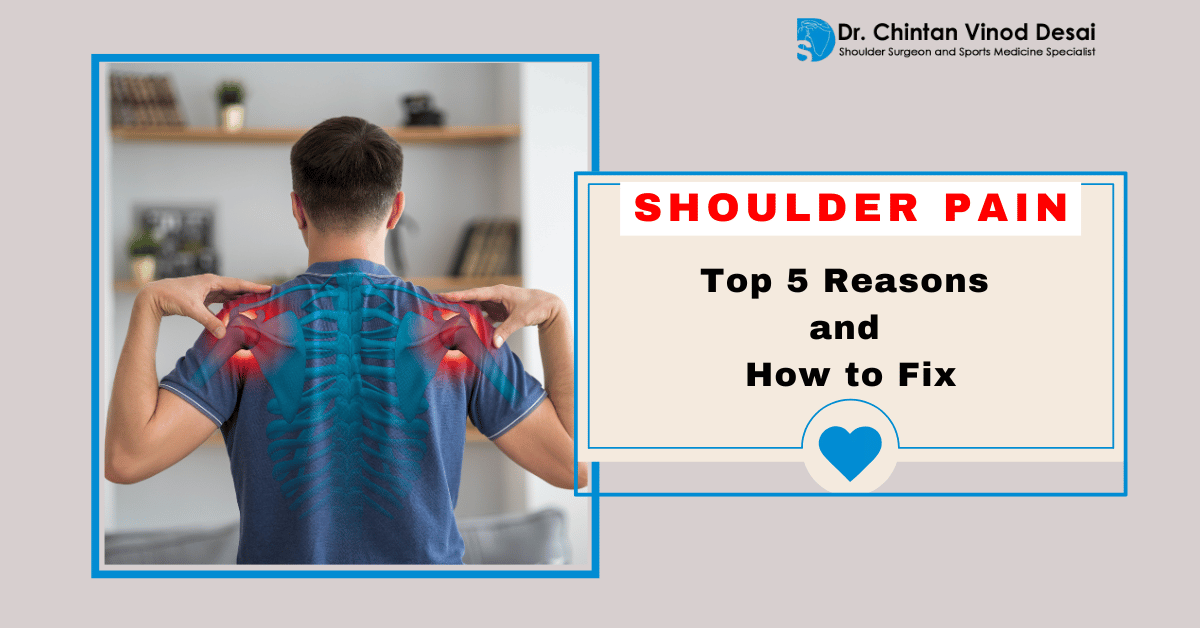Top 5 Reasons and How to Fix Shoulder Pain
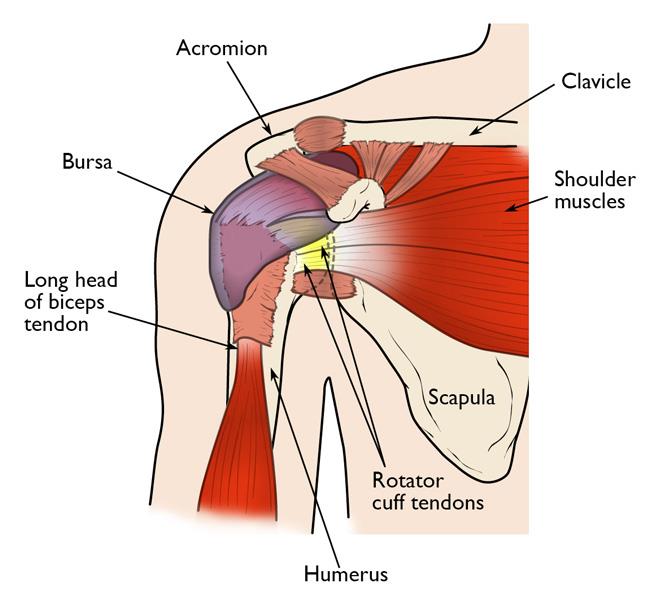
Shoulder pain is something many of us experience at some point in our lives. Whether it’s from a sports injury, lifting something too heavy, or just the wear and tear that comes with age, shoulder pain can stop us from doing the simplest of tasks. But the good news is that there’s a lot you can do to manage and treat it. In this blog, we’ll take a closer look at the top five causes of shoulder pain and offer some practical tips for treatment.
1. Rotator Cuff Injury
The rotator cuff is made up of muscles and tendons that help stabilize and move your shoulder joint. It’s responsible for a lot of your shoulder movements, especially when you raise your arm. If you’ve ever experienced sharp shoulder pain when lifting something or reaching overhead, you might have injured your rotator cuff.
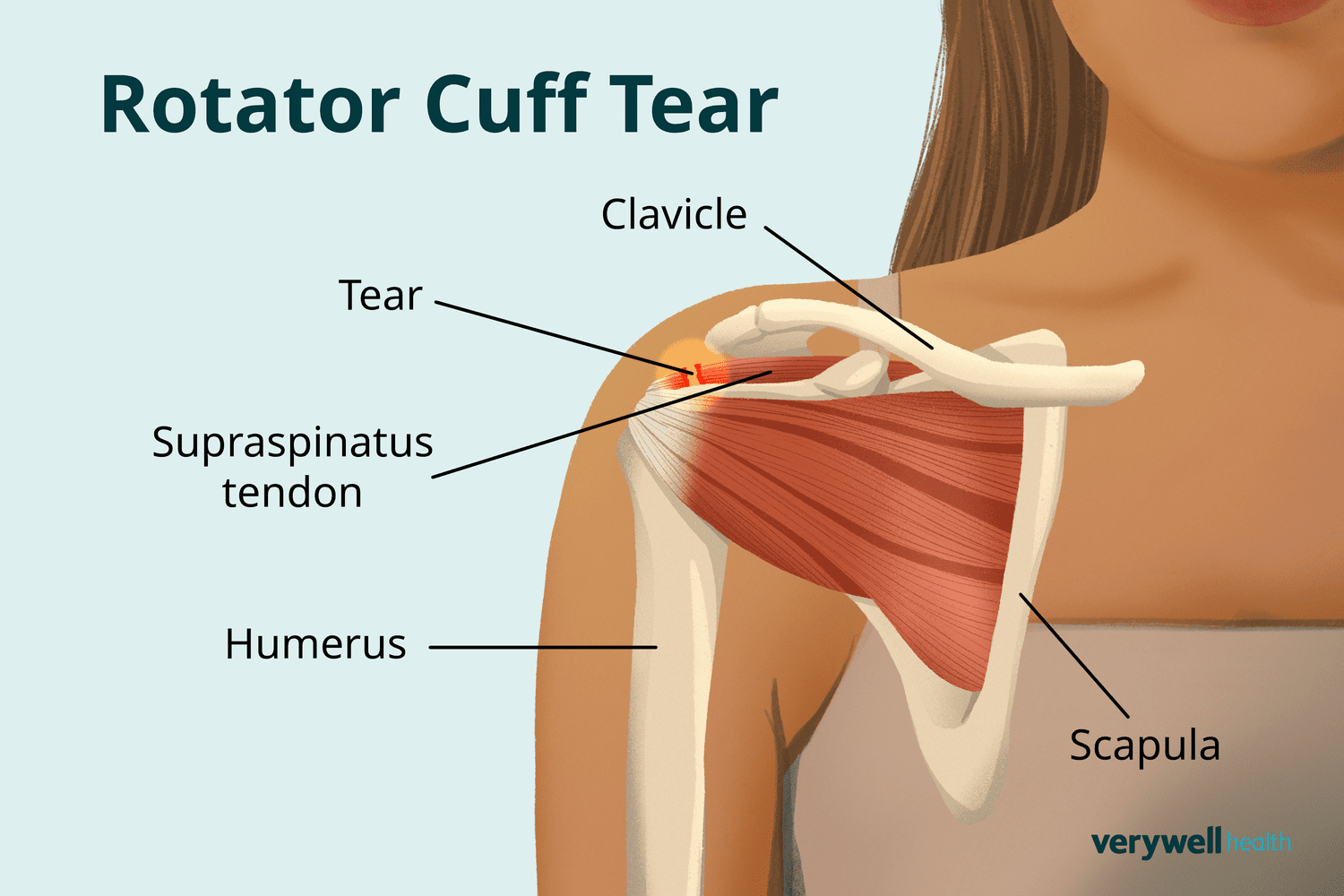
Rotator cuff injuries can range from a mild strain to a full tear. This type of injury is especially common among athletes, but it can happen to anyone—particularly if you’re involved in repetitive overhead motions like painting, throwing, or lifting.
Treatment Tips:
- Rest: Giving your shoulder a break from any movements that cause pain is essential.
- Physical Therapy: Working with a physical therapist can help you strengthen the muscles around your shoulder and improve flexibility.
- Surgery: If the injury is severe, surgery might be necessary to repair the tendon.
2. Frozen Shoulder (Adhesive Capsulitis)
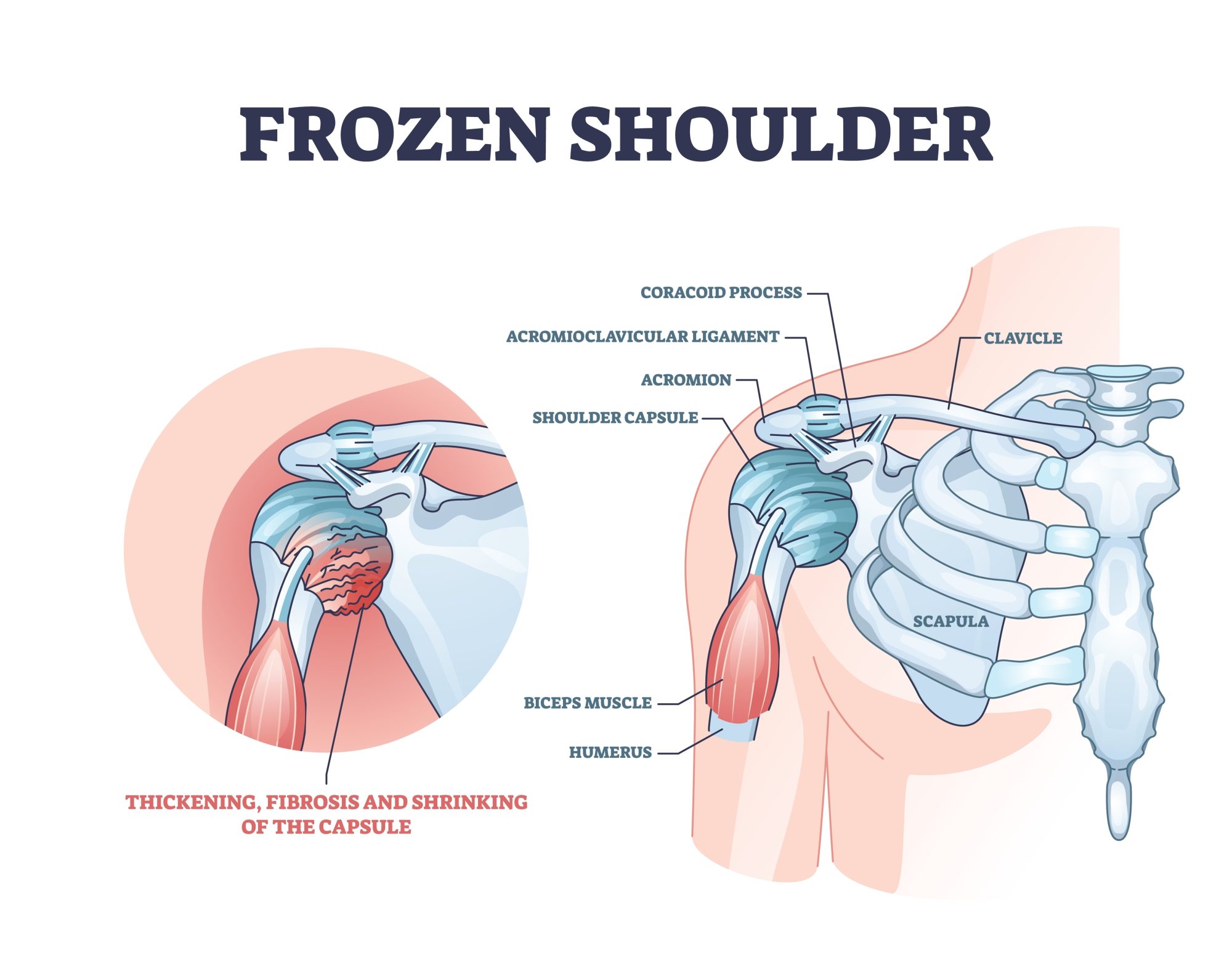
Frozen shoulder is when the tissue around your shoulder joint becomes stiff and inflamed, limiting your shoulder’s range of motion. It typically develops slowly and is most common in people aged 40 to 60. The pain usually starts gradually and becomes worse over time. The movement of the shoulder can be so limited that even simple tasks like reaching behind your back become impossible.
This condition often develops after an injury or surgery that causes a person to keep the shoulder still for a long period.
Treatment Tips:
- Stretching and Mobility Exercises: Regular stretching, especially under the guidance of a therapist, can help restore mobility.
- Medications: Over-the-counter pain relievers like ibuprofen can help with pain and inflammation.
- Steroid Injections: In more severe cases, corticosteroid injections can reduce inflammation and ease pain.
- Surgery: If nothing else works, surgery may be required to remove the stiff tissue.
3. Shoulder Impingement Syndrome
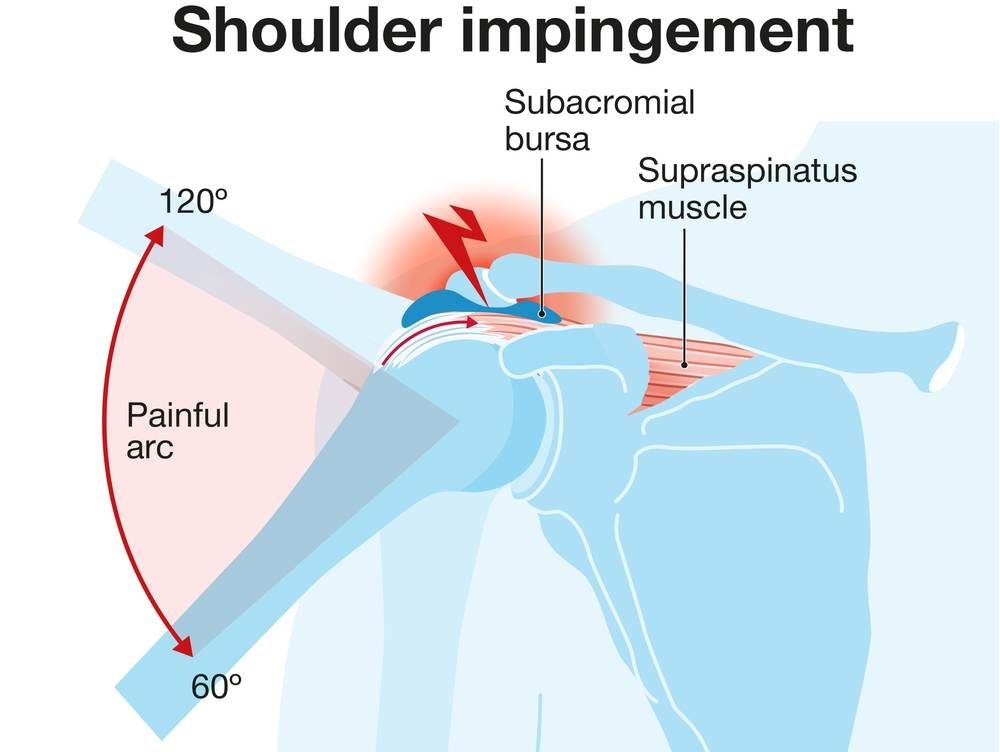
Shoulder impingement occurs when the tendons of the rotator cuff get pinched between the bones of the shoulder. This can happen from repetitive overhead movements, like throwing a baseball or lifting weights, and can result in pain when you try to lift your arm or perform any overhead activities.
The shoulder joint is a ball-and-socket joint, and impingement can cause irritation in the tendons, making it feel like your shoulder is “catching” as you move.
Treatment Tips:
- Rest and Ice: Giving your shoulder a rest and applying ice can reduce swelling and inflammation.
- Physical Therapy: Focused exercises can strengthen the muscles around the shoulder, helping to reduce pressure on the tendons.
- Surgery: If the pain continues despite other treatments, surgery to remove part of the bone causing the impingement may be recommended.
4. Shoulder Arthritis
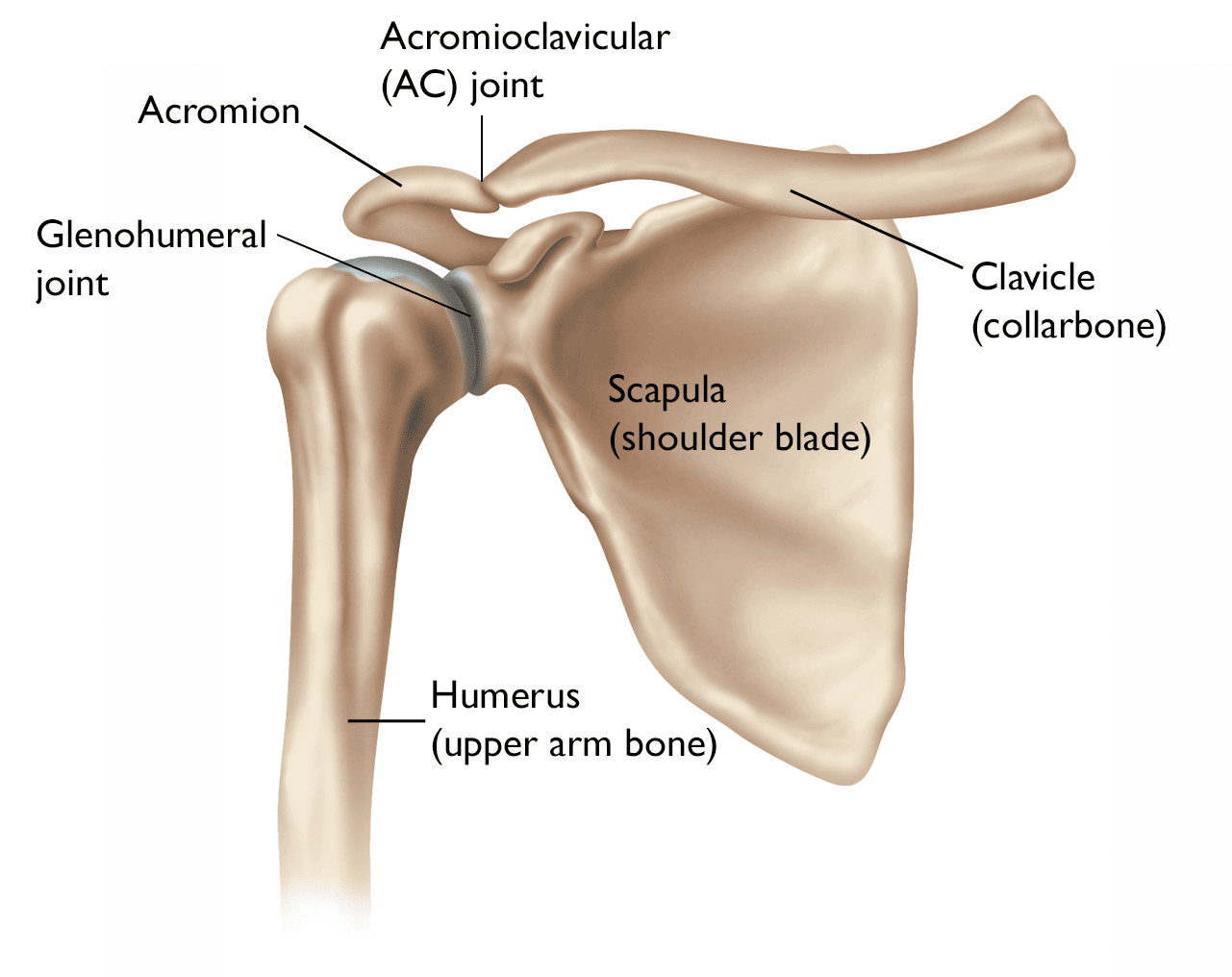
Shoulder arthritis refers to the inflammation of the cartilage in your shoulder joint. There are two main types: osteoarthritis (the “wear and tear” type) and rheumatoid arthritis (an autoimmune condition). Over time, arthritis can cause the cartilage in the joint to break down, leading to pain, stiffness, and swelling.
It’s a common condition as we age, but anyone can develop arthritis depending on factors like genetics, injury, or overuse.
Treatment Tips:
- Pain Medications: Over-the-counter anti-inflammatory medications like ibuprofen can help manage pain.
- Physical Therapy: Strengthening the muscles around the shoulder joint can take some of the stress off the affected area.
- Steroid Injections: If pain persists, corticosteroid injections can help reduce inflammation.
- Shoulder Replacement Surgery: In severe cases, a shoulder replacement surgery may be needed to replace the damaged joint with a prosthesis.
5. Calcific Tendonitis
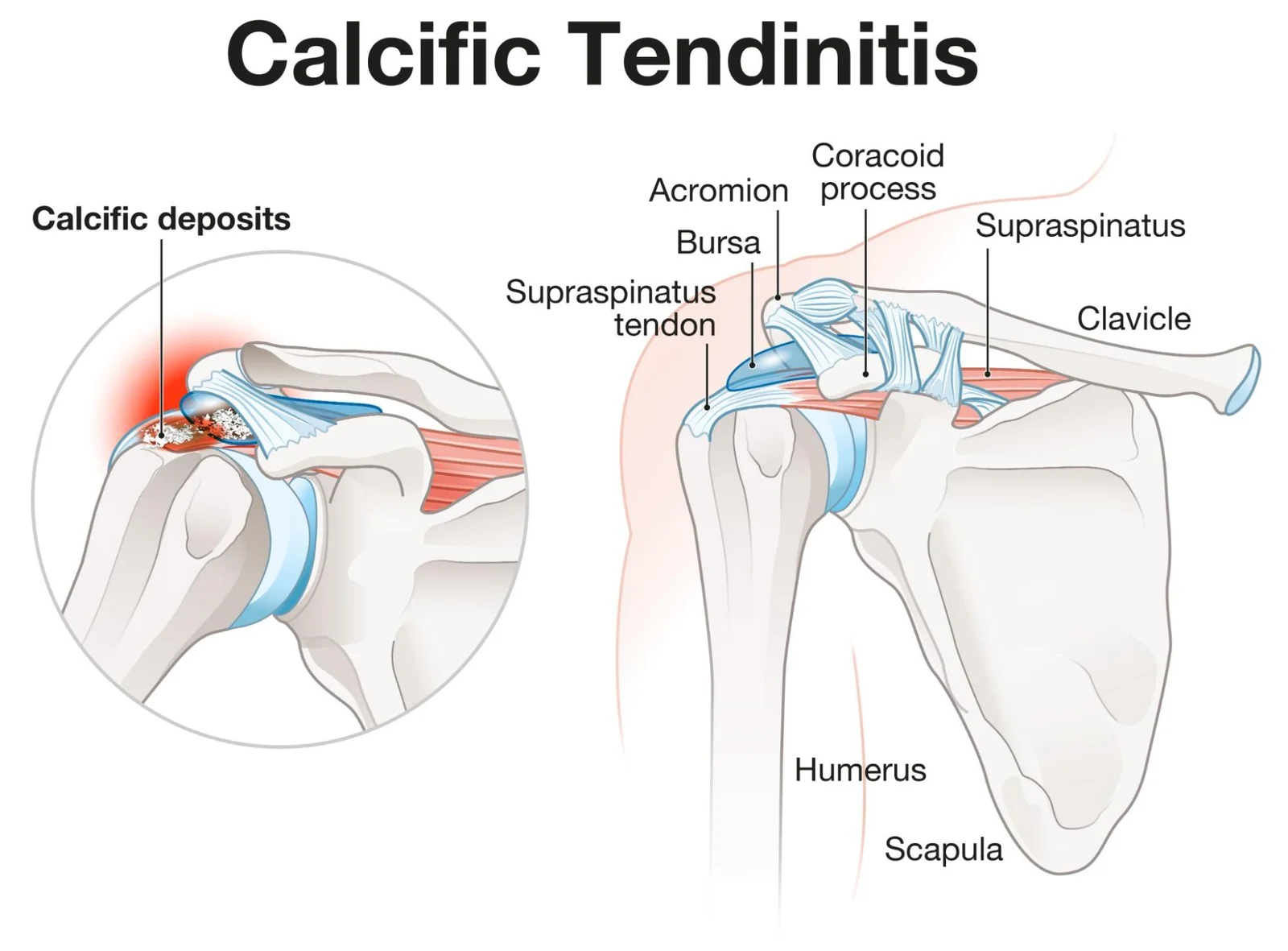
Calcific tendonitis is a condition where calcium deposits form in the tendons of the shoulder, most commonly in the rotator cuff tendons. These deposits can cause pain and inflammation, especially when you try to lift or rotate your arm. The pain can be sharp and can happen suddenly, often without warning.
Treatment Tips:
- Rest and Ice: Taking a break from activities that cause pain and applying ice can reduce swelling.
- Pain Relief: Non-steroidal anti-inflammatory drugs (NSAIDs) can help manage the pain and inflammation.
- Physical Therapy: Gentle exercises can help restore movement and alleviate some of the discomfort.
- Shockwave Therapy: This is a non-invasive treatment that uses sound waves to break up the calcium deposits in the tendon.
- Surgery: If the calcium deposits don’t go away with conservative treatments, surgery may be necessary to remove them.
Dr. Chintan Vinod Desai is a consulting Shoulder Surgeon who practices in multiple locations across Mumbai, including Tardeo, Parel, Dadar, Mumbai Central, Lalbaug, Santacruz, and Mulund. With years of experience in shoulder surgery, he specializes in diagnosing and treating a wide variety of shoulder conditions. Whether you’re dealing with rotator cuff injuries, frozen shoulder, or more complex conditions like arthritis or impingement, Dr. Desai uses the latest techniques to ensure you receive the best care possible.
FAQs
Q1: How can I tell if I have a rotator cuff injury?
A rotator cuff injury often involves pain and weakness when lifting the arm. If you experience difficulty reaching overhead or pain when lying on the affected side, it’s time to see a doctor for an assessment.
Q2: Can frozen shoulder be treated without surgery?
Yes, frozen shoulder can usually be managed with physical therapy, pain management, and stretching exercises. Surgery is considered only if non-surgical treatments don’t provide relief.
Q3: Is shoulder impingement a serious condition?
Shoulder impingement can be painful, but it is treatable with physical therapy and rest. Surgery is only recommended for severe cases that don’t improve with other treatments.
Q4: What can I do to prevent arthritis in my shoulder?
To prevent shoulder arthritis, avoid repetitive overhead movements, maintain a healthy weight, and focus on strengthening the muscles around the shoulder joint.
Q5: How long does it take to recover from shoulder surgery?
Recovery time depends on the type of surgery performed. For less invasive surgeries, recovery may take a few weeks, while more complex procedures like shoulder replacement can take several months.
Conclusion
Shoulder pain can be caused by a number of factors, from rotator cuff injuries to arthritis or frozen shoulder. The good news is that many of these conditions can be treated with rest, physical therapy, and proper medical intervention. If you’re experiencing shoulder pain that doesn’t seem to improve, don’t hesitate to consult a specialist like Dr. Chintan Vinod Desai. Early treatment can help you regain full mobility and get back to your normal routine.

